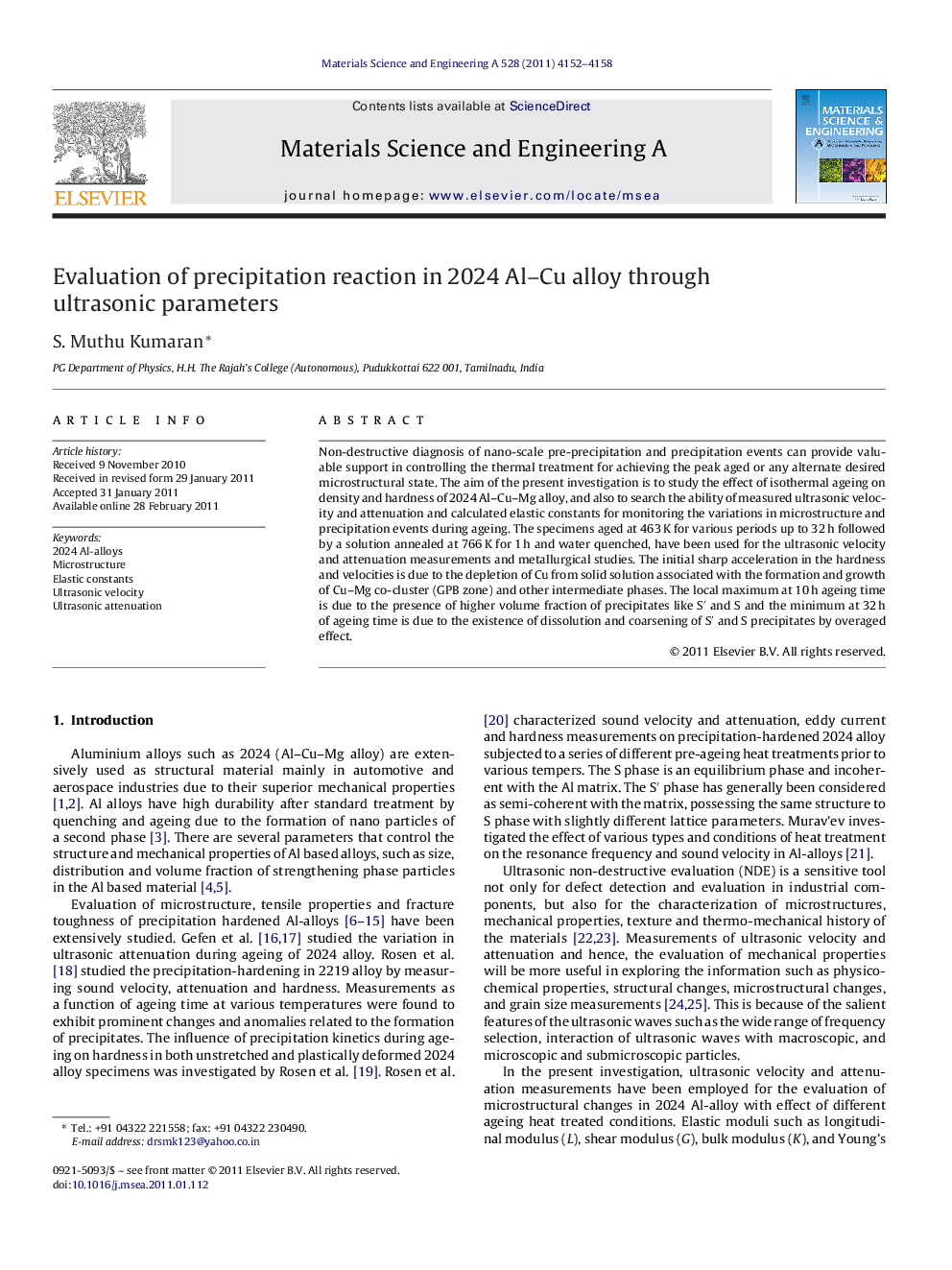| Article ID | Journal | Published Year | Pages | File Type |
|---|---|---|---|---|
| 1579216 | Materials Science and Engineering: A | 2011 | 7 Pages |
Non-destructive diagnosis of nano-scale pre-precipitation and precipitation events can provide valuable support in controlling the thermal treatment for achieving the peak aged or any alternate desired microstructural state. The aim of the present investigation is to study the effect of isothermal ageing on density and hardness of 2024 Al–Cu–Mg alloy, and also to search the ability of measured ultrasonic velocity and attenuation and calculated elastic constants for monitoring the variations in microstructure and precipitation events during ageing. The specimens aged at 463 K for various periods up to 32 h followed by a solution annealed at 766 K for 1 h and water quenched, have been used for the ultrasonic velocity and attenuation measurements and metallurgical studies. The initial sharp acceleration in the hardness and velocities is due to the depletion of Cu from solid solution associated with the formation and growth of Cu–Mg co-cluster (GPB zone) and other intermediate phases. The local maximum at 10 h ageing time is due to the presence of higher volume fraction of precipitates like S′ and S and the minimum at 32 h of ageing time is due to the existence of dissolution and coarsening of S′ and S precipitates by overaged effect.
Research highlights► The sharp acceleration in the velocities in region A is due to the formation and growth of Cu–Mg co-cluster (GPB zone) and other intermediate phases. ► The maximum in velocities at 10 h is mainly due to higher volume fraction of partially coherent S′(Al2CuMg) precipitate in association with the non-coherent S precipitate. ► The decrease in velocities in C region is due to the presence of dissolution and coarsening of S′ and S phase by the over ageing effect.
